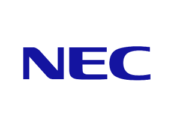NEC Corporation Analyzes Microsoft SharePoint Usage and Restructures Data with Full Fidelity for 1,300 Gloally Dispersed Users with DocAve
Success Highlights
Automatically collected and reported on information from audit logs for all 21 SharePoint site collections to report on activity by 1,300 users from 37 offices in 30 countries around the globe
Swiftly aggregated and separated content in site collections according to business need upon request for users
Maintained data’s full fidelity – including permissions, time stamps, and last modifying user – while restructuring content for users


Location Japan
Industry Technology
Platform SharePoint 2010
Critical Needs
- Automated collection and reporting abilities for user activity across the entire SharePoint environment
- Swift migration and consolidation of SharePoint content within environment while maintaining data’s full fidelity
With DocAve, we are now able to automate the collection of information from the audit logs output by all SharePoint site collections, and this is really a great help for us.
Mr. Mitsuhiro Hatta
Manager of Global Strategy Group, Global Business Planning Division, NEC Corporation
Manager of Global Strategy Group, Global Business Planning Division, NEC Corporation